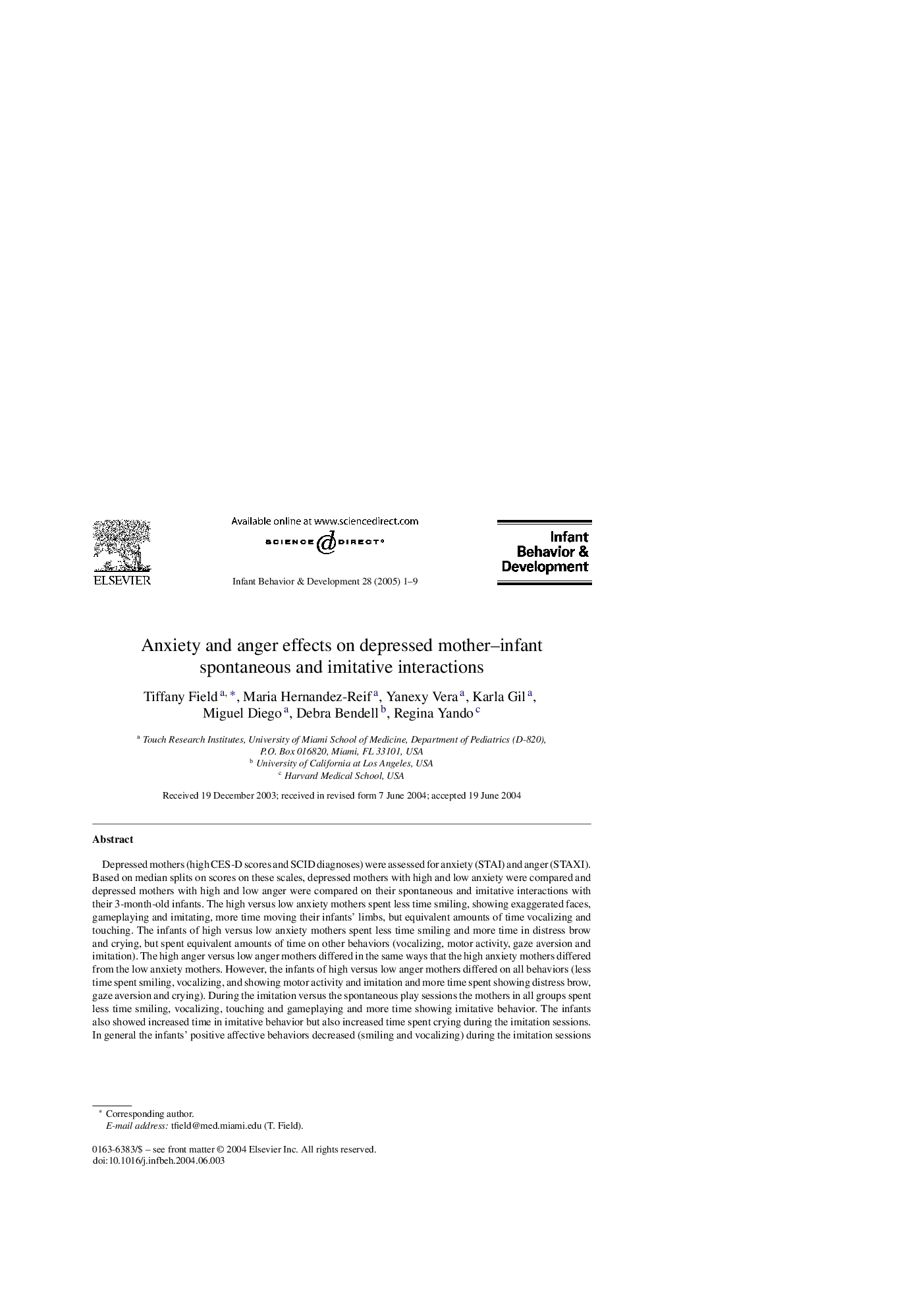| کد مقاله | کد نشریه | سال انتشار | مقاله انگلیسی | نسخه تمام متن |
|---|---|---|---|---|
| 10452910 | 919298 | 2005 | 9 صفحه PDF | دانلود رایگان |
عنوان انگلیسی مقاله ISI
Anxiety and anger effects on depressed mother-infant spontaneous and imitative interactions
دانلود مقاله + سفارش ترجمه
دانلود مقاله ISI انگلیسی
رایگان برای ایرانیان
موضوعات مرتبط
علوم زیستی و بیوفناوری
علم عصب شناسی
علوم اعصاب رفتاری
پیش نمایش صفحه اول مقاله

چکیده انگلیسی
Depressed mothers (high CES-D scores and SCID diagnoses) were assessed for anxiety (STAI) and anger (STAXI). Based on median splits on scores on these scales, depressed mothers with high and low anxiety were compared and depressed mothers with high and low anger were compared on their spontaneous and imitative interactions with their 3-month-old infants. The high versus low anxiety mothers spent less time smiling, showing exaggerated faces, gameplaying and imitating, more time moving their infants' limbs, but equivalent amounts of time vocalizing and touching. The infants of high versus low anxiety mothers spent less time smiling and more time in distress brow and crying, but spent equivalent amounts of time on other behaviors (vocalizing, motor activity, gaze aversion and imitation). The high anger versus low anger mothers differed in the same ways that the high anxiety mothers differed from the low anxiety mothers. However, the infants of high versus low anger mothers differed on all behaviors (less time spent smiling, vocalizing, and showing motor activity and imitation and more time spent showing distress brow, gaze aversion and crying). During the imitation versus the spontaneous play sessions the mothers in all groups spent less time smiling, vocalizing, touching and gameplaying and more time showing imitative behavior. The infants also showed increased time in imitative behavior but also increased time spent crying during the imitation sessions. In general the infants' positive affective behaviors decreased (smiling and vocalizing) during the imitation sessions and their distress behaviors increased (motor activity, distress brow, gaze aversion and crying), although the infants of the high anger mothers changed less than the infants of the high anxiety mothers.
ناشر
Database: Elsevier - ScienceDirect (ساینس دایرکت)
Journal: Infant Behavior and Development - Volume 28, Issue 1, March 2005, Pages 1-9
Journal: Infant Behavior and Development - Volume 28, Issue 1, March 2005, Pages 1-9
نویسندگان
Tiffany Field, Maria Hernandez-Reif, Yanexy Vera, Karla Gil, Miguel Diego, Debra Bendell, Regina Yando,